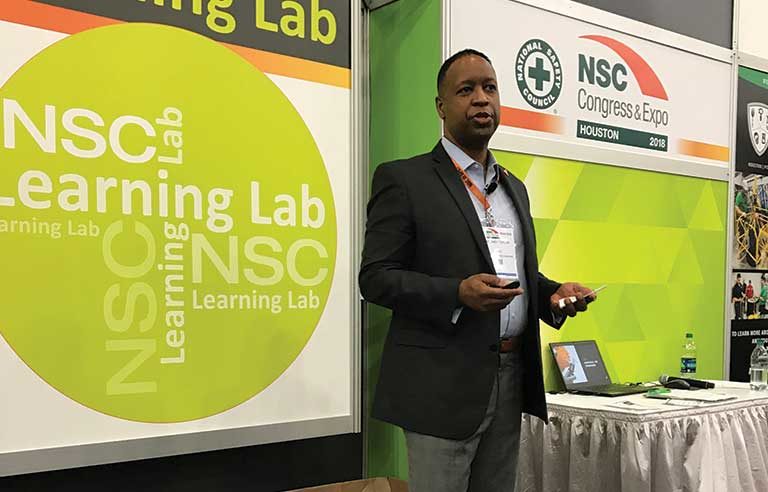‘Our hands are our most important tool’: Experts discuss future of hand protection

Houston — In response to the high frequency of hand injuries among workers, the International Safety Equipment Association is working to finalize a new standard with the American National Standards Institute for back-of-the-hand impact protection.
During a Learning Lab session Tuesday at the 2018 National Safety Council Congress & Expo, Rodney Taylor, industrial personal protective equipment global sales and marketing manager for D3O, and Paul Harris, vice president of product strategy and innovations with MCR Safety, discussed the future of hand protection in the workplace.
“We realize that hand injuries are frequent,” Taylor said. “Our hands are our most important tool, and we need to do all we can do to protect them. Hand injuries are a big problem for our industry.”
In 2015, hand injuries ranked second only to back injuries in total workplace injuries, according to data from the Bureau of Labor Statistics.
Taylor explained how ANSI/ISEA 138 came about as a stand-alone standard when impact to the back of the hand was not being tested. Seven companies collaborated to help develop the standard, along with a hand surgeon who works with occupational hand injuries.
“Most of the manufacturers participating in this work group were competitors,” Taylor said. “To see a bunch of competitors sit together, working in the best interests of industrial workers, was pretty impressive to see.”
Under the standard, product certification would take place at an independent lab, include fingers and knuckles, involve three performance levels (rather than pass-fail testing), and require all products to have a pictogram mark on them.
Harris noted that great change can be made in the PPE manufacturing industry to reduce hand injuries.
“If you look at OSHA statistics, of the 145,000 recordable injuries in today’s workplace and government agencies, 63 percent of those are made up of cuts,” Harris said. “Another 18 percent are made up of crush and bone breakage. There’s a tremendous opportunity for improvement and reduction in these numbers.”
Cut and puncture resistance can be enhanced with better materials, coating and fiber construction, among others.
“If the price is too good to be true, usually there’s a pretty good reason why,” Harris said. He shared five ways industry can help drastically reduce and work toward eliminating hand injuries: continued education, partnering with a trustworthy manufacturer or distributor, real-world analysis of applications that are being performed, comparative analysis, and continued develop of next-generation fibers and materials to provide better dexterity and protection.

